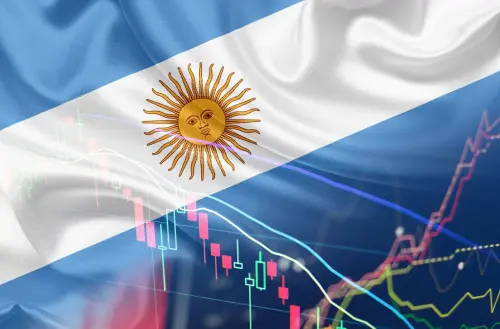The end of the last commodity boom from 2000-2014 and recent swings in world oil prices have once again brought to the fore one of the most important binding constraints to long-term growth and economic development in Africa—the lingering effects of colonialism on Africa’s patterns of trade and the dynamics of world markets. Several decades after independence, little has changed with Africa’s patterns of growth and trade. They are still largely driven by primary commodities and natural resources, reflecting the persistence of the colonial development model where natural resource-endowed nations served as feedstock to advanced economies.
Because manufactured goods with increasing technological content account for much of global trade, the continued reliance on colonial-era “extractivist” development models has marginalized Africa in the global economic and trading environment. It has also markedly increased the region’s exposure to global volatility and risks associated with long-term deterioration of commodity terms of trade—the ratio between a country’s export prices and its import prices. The combined GDP of the continent, which crossed the historical threshold of $2.0 trillion in 2011 and rose to $2.4 trillion in 2014, decreased to $1.9 trillion in 2017, owing primarily to sharp downturns in natural resource-dependent economies triggered by the end of the commodity boom in the second half of 2014.
Likewise, total African trade, which exceeded $1.0 trillion for the first time in 2011, fell to $820 billion in 2017. The region’s contribution as a share of global trade was equally affected by commodity price gyrations in world markets. Though already dismally low, Africa’s share of world trade decreased from 2.78 percent in 2013 to 2.34 percent in 2017. Africa’s relative contribution to global trade is now less than that of South Korea, which had 2.93 percent of total international trade in 2017. The region’s aggregate GDP and total trade figures are yet to return to pre-crisis level.
Exports of primary commodities are highly income inelastic. The growth of world incomes is therefore not always associated with a proportionate increase in demand for primary commodities. In this context the extractivist development model, where primary commodities are exported for greater value addition along global commodity value chains, has been costly for natural resource-rich countries not just in terms of trade but also incomes and welfare. It is largely responsible for the widening income gap between Africa and other regions of the world and has sustained the exodus of Africans looking for economic opportunities outside the continent. The outsourcing of value addition is positively correlated with the outsourcing of jobs.
BENEFITING FROM COMMODITY-BASED INDUSTRIALIZATION
In addition to stemming the outflow of migrants, extracting more value from natural resources could help align the growth of natural resource-rich African countries’ national incomes with the world’s incomes, and perhaps narrow the widening income gap with the rest of the world. At the same time, developing the capacity to process primary commodities and natural resources could create a virtuous cycle of inclusive growth and expansion of intra-African trade.
In Southern Africa, the development of diamond-processing capacities in Botswana is shifting the patterns of production and intra-regional trade. Namibian diamonds, previously exported in rough form to diamond trader De Beers in London, are now sent to Botswana for further processing before entering global value chains. This re-export model is changing an industry historically shaped by extractivist development models, and has propelled Botswana and Namibia into the ranks of top intra-African trading nations.
The success of the diamond value chain in Southern Africa illustrates the benefits of commodity-based industrialization. In addition to growth and expansion of income-generating opportunities, the re-export of hard commodities for further processing within the region is boosting intra-African trade, optimizing the use of existing processing infrastructures, and sustaining high returns on large-scale investments in the mining sector. This model could be replicated with other hard commodities to further increase value retention along the global value chain and deepen the process of economic integration during the implementation of the African Continental Free Trade Area (AfCFTA) agreement.
In the soft commodity space, a few initiatives are also ongoing to expand processing capacities for increased value addition. One of the most notable, undertaken by the African Export-Import Bank, is the Africa Cocoa Initiative (AFRICOIN) which provides end-to-end solutions (upstream, midstream, and downstream) to the African cocoa sector. At midstream, the bank is supporting a deeper integration of the African cocoa economy into the global value chain by expanding the processing of raw cocoa into industrial cocoa (including cocoa liquor, powder, and butter) to feed manufacturing plants in Europe, North America, and Asia.
Although the Africa Cocoa Initiative has received little publicity, its impact has been significant in Côte d’Ivoire—the world’s leading producer of cocoa beans that, over the years, has captured less than 10 percent of the global cocoa value chain that generates more than $120 billion annually. The support provided by the Bank has enabled Côte d’Ivoire to increase its processing capacity to become a leader in the global cocoa processing space and to overtake the Netherlands as the world’s largest processor of cocoa during the 2014-15 season. The AFRICOIN model could be replicated with a wide range of other soft commodities to extract more value and lift more people out of the vicious cycle of poverty and intergenerational dependency.
The process of value addition along African commodities is likely to be enhanced under the AfCFTA, which offers tremendous opportunities for economies of scale and regional value chains to smooth the transition towards more competitive global value chains. At the same time, the success of a few natural resource-rich nations in value addition and export diversification will serve as a catalyst for economic transformation, further accelerating the development of regional value chains for commodity-based industrialization and beyond.
RECOMMENDATIONS FOR BALANCING THE COMMODITY MARKETS
Since the first Industrial Revolution, the expansion of capacities for value addition has provided the path for sustainable growth and effective integration into the global economy. Ongoing initiatives and investments to expand the “soft” and “hard” infrastructure network (industrial parks and export processing zones) to address supply side constraints and move up regional and global value chains are timely. Africa’s huge natural resource endowment should enhance the process of vertical integration in the quest for increased value addition and effective integration into global value chains.
Installing the right infrastructure to transcend the colonial legacy of extractivist models has been an intergenerational challenge. That challenge has persisted into the 21st century and must now be overcome to mitigate exposure to global volatility and expand employment opportunities in the formal economy. Perhaps by changing the structure of production to integrate the global demand for primary commodities and natural resources, Africa can rebalance the supply and demand equation in commodity markets and ultimately change the dynamics of world markets.
The Brookings Institution is committed to quality, independence, and impact.
We are supported by a diverse array of funders. In line with our values and policies, each Brookings publication represents the sole views of its author(s).




Commentary
Overcoming the colonial development model of resource extraction for sustainable development in Africa
January 31, 2019